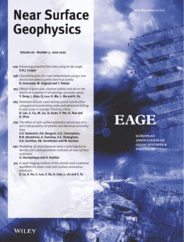-
oa Characterization of a river embankment using a non‐destructive direct current electrical survey
- Source: Near Surface Geophysics, Volume 20, Issue 3, May 2022, p. 238 - 252
-
- 30 Nov 2021
- 11 Feb 2022
- 15 Mar 2022
Abstract
River embankments are earthen structures constructed to protect areas from flooding. If a river embankment collapses, it can cause major damage to human lives; therefore, proper inspection and evaluation are essential to determine the problem areas in river embankments, and repair them if necessary, before any damage occurs. Electrical surveys are a reliable method that has been used widely. Recently, electrical surveys have been used to inspect long structures such as river embankments, highlighting the need for developing non‐destructive and less fieldwork electrical survey methods. In this study, we examined a direct current electrical exploration system using polyvinyl alcohol sponge roller electrodes, which are non‐destructive and can be moved smoothly without damaging the ground surface. We conducted initial experiments on a test ground in which this new system was towed by an unmanned ground vehicle to perform an electrical survey and compared the results with those obtained using conventional methods that utilize stainless steel electrodes driven into the ground. The results indicate that the direct current electrical survey using the polyvinyl alcohol electrodes yielded almost the same results as those obtained using the stainless steel electrodes. In addition, both methods were tested on a river embankment to investigate the effectiveness of the towed direct current electrical survey. We confirmed that the towed survey method was effective by comparing the resistivity cross‐sections and fieldwork required for both survey types.




